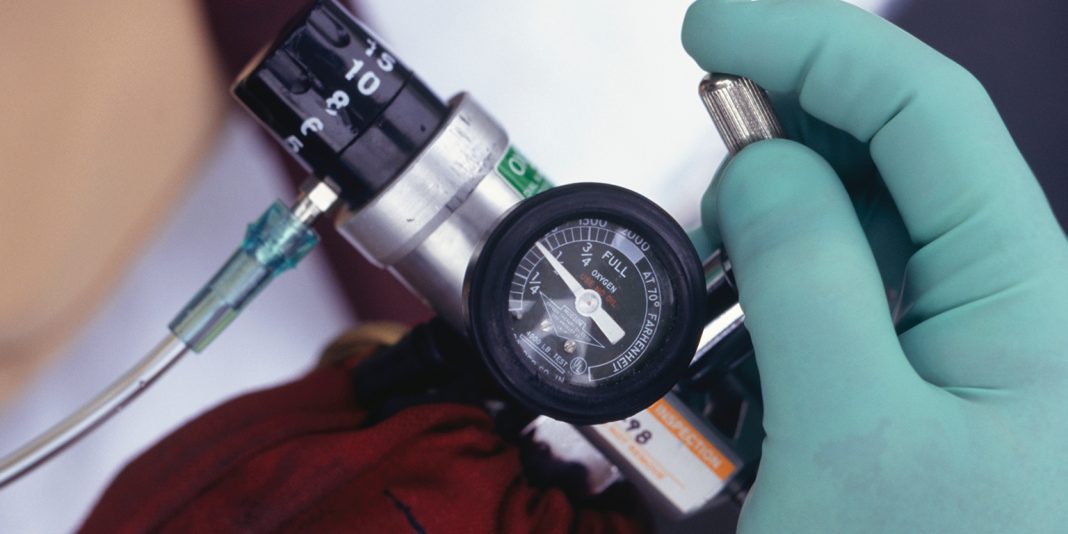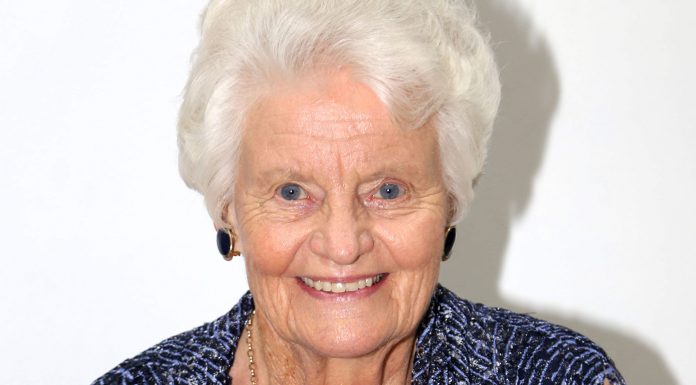Julie* wanted to be at home in her own bed with her family and friends around her.
But the daily dressing of her terminal malignant wound was just too painful without the relief of Entonox gas, traditionally only available in secondary care.
As Julie lay in Christchurch Hospital wishing to be at home – and to be as normal as possible for as long as possible – a team of Nurse Maude nurses rallied to make her goal achievable.
The team presented to the recent Clinical Nurse Specialist Society conference on how meeting Julie’s wish motivated them to – within a week – fast-track the policies, training and equipment that were required to enable Nurse Maude district nurses for the first time to deliver home-based Entonox (a mix of nitrous oxide and oxygen) pain relief.
The results were that not only did Julie get to return home to be with her husband Ken*, but also the innovation she motivated has seen home-based Entonox used again for another wound care patient facing severe acute pain when her wounds were cleaned and dressed.
Unlike other forms of pre-and post-dressing pain relief, Entonox works quickly, gives the wound care patients control over their own pain and is short-acting, so doesn’t leave them drowsy for the remainder of the day.
Julie’s story
Julie was a 63-year-old woman with a strong belief system, a very supportive husband and a close circle of family and church friends, says palliative care nurse specialist Mary Fairhall.
She was first diagnosed and treated for metastatic rectal adenocarcinoma in 2013 but the cancer returned in 2015 and treatment was unfortunately unsuccessful. When Fairhall met Julie in late 2016 the palliative patient had an extensive fungating tumour on her back producing a lot of exudate, and the daily dressings of the large, open, tunnelling wound were causing severe pain and nausea. The team tried to address the pain by using oxycodone before and after dressings but Julie still rated her pain five-out-of-five at dressing change time.
This led to Julie being hospitalised, where she was reviewed for analgesia and cares. The “transformative” change was using Entonox gas for dressing changes, as it dramatically reduced Julie’s pain during wound dressings from a five-out-of-five to a one-out-of-five, or even a zero.
But Julie had a real desire to be at home and to live a life as normal as possible. The barrier was that Nurse Maude – or any other district or palliative care nursing service that they knew of – had never delivered Entonox at home.
The high oxygen content of the 50/50 nitrous oxide/oxygen gas means transporting and storing the Entonox gas cylinders is not without risk. District nurses were also not trained in delivering Entonox, and would be doing so in a person’s home without the back-up support available to hospital nurses if there was respiratory failure – so training and processes were required to be in place to keep both nurse and patient safe.
Speedy response
Nurse Maude decided to see meeting Julie’s goal of being home “as an opportunity rather than a challenge”, says Rose McConchie, Nurse Maude’s community clinical nurse educator.
“Our main constraint was time,” says McConchie. Julie started to deteriorate in hospital and the team knew they needed to do a lot in a hurry. This included training, creating safety policies and protocols; and working out how to supply and fund Entonox in the home.
“Certainly the pressure was on,” says McConchie. But, she says, they had a great collaborative team in the oncology ward team, the palliative care team, the wider Nurse Maude team (including the Community Nursing Service Manager and the Clinical Nurse Manager), the gas provider BOC, and Julie’s family.
McConchie had to create Entonox usage guidelines for the patient, a gas monitoring and re-ordering system, and a consent form for storing Entonox gas in a private home. The consent form set out a safety checklist, which included that the storage space should be well ventilated and there should be no open fires, no smoking, and no mobile phone use near the cylinder and its combustible contents.
The district nursing team in Julie’s area needed to be trained to be competent to deliver Entonox for Julie and to respond in a respiratory emergency. The aim was to assign two nurses for each wound dressing – one to do the wound care and the other to deliver the Entonox. The nurse administering the gas has a pulse oximeter to check the patient’s oxygen saturation, and monitors their pulse, blood pressure and sedation level to ensure the patient is not over-sedated. Oxygen, a mask, and emergency equipment are also on hand in case there is respiratory failure and an airway needs to be inserted.
The Entonox training was done speedily by McConchie completing the DHB’s online Entonox training package and being signed off by Canterbury DHB nurse educators as competent, before going on to sign off the district nurses one by one as they each completed the online competency training.
Innovation brings ease
The result was that within one week Julie was able to return home. The thankful patient told the team that their efforts meant she was “much more at ease, much more relaxed and her pain was much better”.
In addition, “her family and friends could visit any time and the pressure was taken off her supportive husband”.
District nurse Elizabeth Croton says she had cared for Julie and Ken in their home so was quick to say yes to Entonox training.
“I knew them both well enough to know that they would both want to be home for these final weeks,” said Croton. “The Entonox training was going to enable this to happen and give me the confidence and skills to provide that care at Julie’s home.”
Julie’s goals wanted to live as normal a life as possible with family and friends in a home that was ‘non-medical’, apart from a treatment room where the dressing changings were carried out. “Her husband was thrilled to have her at home,” said Croton.
Fairhall said the team continued to adhere to Julie’s wishes. In mid-July Julie and her husband requested a hospice admission and she died peacefully five days later.
The Nurse Maude team was very proud that with the support of many they were able to rapidly respond to Julie’s wishes. The creative ‘under the pump’ response has also resulted in a robust process for prescribing and delivering Entonox in-home on future occasions.
Nurse Maude District Nursing has already had another referral, by a nurse practitioner, for delivering Entonox to a woman who had surgery on abscesses under each arm that required cleaning by irrigation and then packing of the healing wound – a process the woman found very painful.
McConchie said the short-acting nature of Entonox made it perfect for painful procedures such as this as it was quickly out of the system, unlike traditional pain relief like morphine. Using Entonox meant this client could get up straightaway, have breakfast, get on her bike and carry on doing what she needed to do for the rest of the day.
The legacy of Julie’s wish is expected to be more wound care clients whose pain needs are not being well met by traditional means being considered for home Entonox treatment. More patients will also be able to choose to receive care in their own homes – reducing both costs to the taxpayer and stress to palliative patients who, like Julie, just want to go home to their own beds.
*Julie and Ken are pseudonyms





















